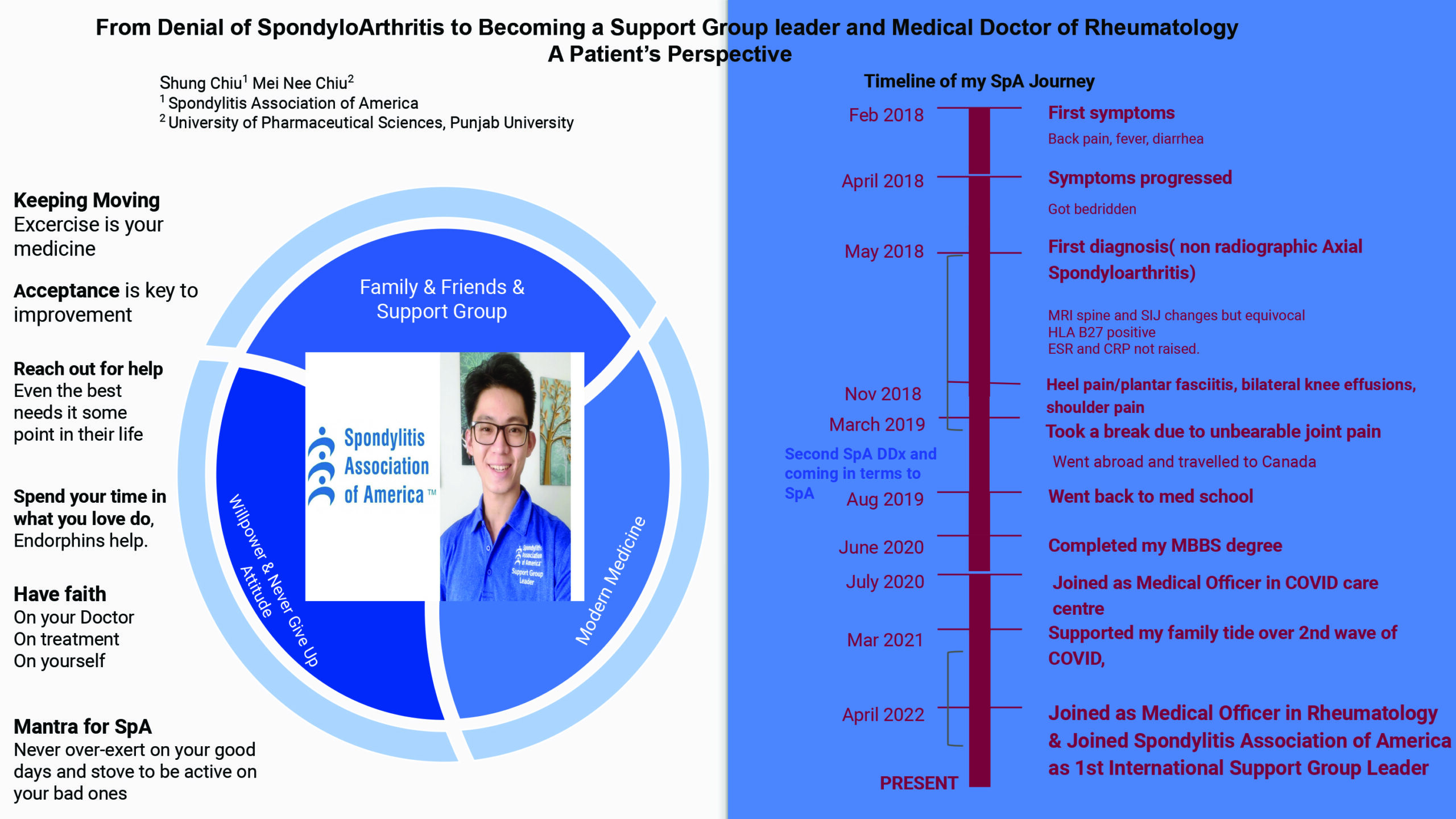PHILADELPHIA—“My symptoms started in the final year of medical school, and at that stage I believed I was strong enough to fight my condition,” said Shung Ming Chiu, MD, in a poster presentation at ACR Convergence 2022. “Later, I realized that it’s not [about] fighting [but] rather accepting it and adapting to the new normal. The biggest challenge I faced was balancing between the good and the bad days, to not overexert on good and strive on bad days—all of it during my final exams in winter.”
Dr. Chiu’s story:
From being a table tennis champion to getting into medical school, I thought my life was smooth sailing. But little did I know it was all going to change.
In February 2018, the day before I turned 22, I started experiencing back pain, fever and diarrhea. The fever and diarrhea resolved in three days, but the pain remained and progressed over the next two months—leaving me bedridden.
My doctor suspected spondyloarthritis (SpA). After the HLA-B27 blood test came back positive and an MRI of my spine showed changes, I was prescribed Etoricoxib, a non-steroidal anti-inflammatory drug (NSAID) followed by sulfasalazine, a disease-modifying anti-rheumatic drug (DMARD). However, they provided only partial relief.
Unconvinced and in search of an alternate diagnosis, I underwent a series of inconclusive medical visits with different doctors and investigations, only to arrive at a dead end. Several diagnoses and medications left me more confused and distraught. All this happened during the last year of medical school. When my colleagues were preparing to embark upon their careers, I was in fear of my future uncertainties, questioning whether I would ever get better.
Desperate for a cure, I tried everything—alternative medicine, physiotherapy and low-impact exercises, such as swimming, cycling and the use of orthotics, but nothing worked. Losing all hope I had spiraled to my lowest point.
I decided to take a break from my studies, and with the help of my family, I went to stay with relatives abroad. The trip made me realize that the world had much to offer, and I shouldn’t waste it self-pitying.
With a new perspective, I was determined to get better. Luckily, I eventually found a doctor who understood my predicament and helped me accept my diagnosis of SpA. From that day onward, I never looked back. I understood my limitations and set my expectations accordingly. With the same medications and exercise routine, I showed more improvement. Slowly and steadily, I got back into my medical training and became a doctor.
In retrospect, I realize that accepting my diagnosis was the hard part. …
I am now a member of the Spondylitis Association of America and its first International Support Group Leader, hoping to inspire people like me to live their best life. I am also working as a medical officer in rheumatology under the leadership of the same doctor who guided me through my SpA journey.
